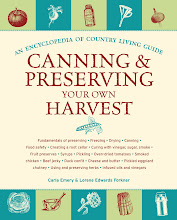Its officially fall. You can see it in the trees, which have stripped themselves of their bountiful vegetation. While trees are now missing their most lustrous beauty, they offer us an opportunity to use them.
Chopping wood is an essential task if one is living outdoors. It is also a more adventurous way to warm oneself than simply turning up the temperature. Whether chopping wood to build a fire or house, this activity offers a great opportunity to learn about living off the land. It is also a great father-son bonding experience; there isn't a dad out there who hasn't attempted to teach "survival man" tactics to their son or daughter. At least with this particular task, it is a practical activity that can be applied to many situations, especially as we approach winter.
When chopping wood, it is essential to know proper technique. But more important than chopping technique is safety. When using a sharp, heavy tool like an ax, it is important to remember you are wielding a dangerous object. Carla Emery chopped wood all her adolescence, and details her knowledge of chopping technique and safety in the Encyclopedia of Country Living.
Chopping Safety.
Strive for accuracy before you strive for force - at least enough so that you don't hit your foot. Then, once you're sure you can put the blade onto the wood, you want to give it all the power you can. Use a good big ax, a heavy one, because you can get a lot more force with it. Wear heavy boots in case you miss. Chips can fly up into an eye or the ax blade can hit a knot and be deflected, so don't let children, or anybody, stand near when you're chopping. If you want to be really safe, wear goggles, a hard hat, and steel-toed boots!
Chopping Technique.
Everybody's got his or her own way of chopping. A friend of ours only lifts the ax to shoulder height, then brings it down with a big grunt and the wood splits. Another friend raises it straight over his head. He holds the ax strong in his left hand, loose in his right hand, and then brings it down kind of pulling with the left hand and pushing with the right hand. The best stroke for me uses both hands on the ax - as if you were holding a baseball bat, only farther apart. To do it my way, if you're right-handed, start the ax out back of your right shoulder behind your head with your back arched backwards just a trifle (or you can alternate shoulders with every swing) and then bring it forward and down, moving your shoulder and chest forward at the same time. Try to hit your block of wood right in the center. You don't want the ax absolutely perpendicular to the stump when it strikes. I aim to get it square on. If your wood doesn't split from the center you can try taking slabs off the edge awhile before you tackle the heart. If you can get your ax into the tree but not out the other side, pull it out and try again. Look for a natural crack to strike into. There usually is one in old wood. If you're still finding it hard, use wedges and a wood-splitting maul or sledgehammer instead of the ax.








No comments:
Post a Comment